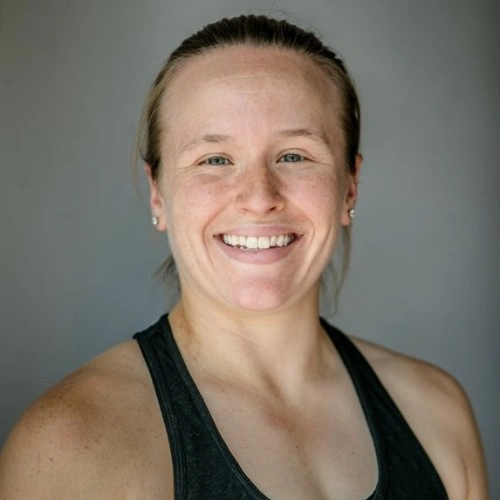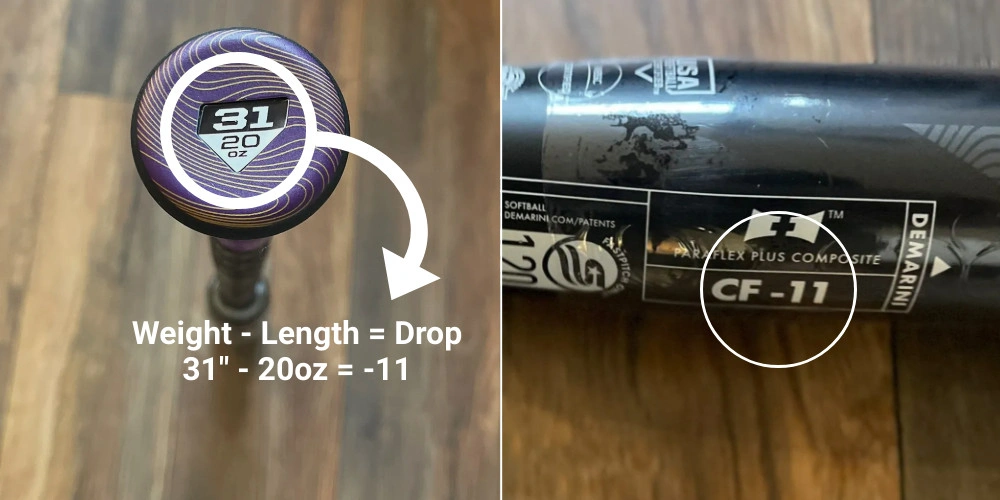What's the Difference Between Fastpitch and Slowpitch Bats?
Congratulations on making the switch from slowpitch to fastpitch!
Or maybe, congratulations on picking up a new hobby and joining your local slowpitch softball league.
It’s time to gear up and get ready to play.
Buying a new bat SHOULD be an exciting and motivating experience, but a quick Google search or stop at the local sporting goods store for bats can easily leave you feeling overwhelmed.
Here are the top questions to be answered to narrow down your search and speed up the process of finding the best bat for you.
How Are Slowpitch and Fastpitch Bats Different?
In concept, slowpitch and fastpitch softball are very similar; however, the offensive differences at the plate require different bats.
Slowpitch bats are designed to allow the hitter to create power on an average pitch speed of 20-25 mph. As a result, slowpitch bats are heavier and more end-loaded (more to come on this) with a barrel diameter of 2.25 inches.
While a hitter using a heavier bat CAN generate more power, that does not mean the heavier, the better. It’s important to know that all slowpitch softball bats must weigh 31.5 ounces or less regardless of your league’s governing body.
Fastpitch bats are designed for a very different purpose.
These bats are designed for a quicker swing to allow the speed of the pitch (upwards of ~70 mpg) to generate the power on the ball.
End-loaded bats are used in fastpitch, but bats are overall much lighter and more balanced when compared to a slowpitch bat.
Barrel diameter (2.25 inches), maximum weight (31.5 oz) and maximum length (34 inches) are all the same for fastpitch and slowpitch. That means you COULD use a slowpitch bat in fastpitch and vice versa; however, it is recommended that you use a bat for its respective sport.
What Are the Different Types of Bats?
Aside from classifications as a slowpitch or fastpitch bat, there are 3 classifications of bats to be aware of while shopping.
#1 Bat Makeup
If you’re new to picking out softball bats, you might be surprised to hear someone ask “Is it a one-piece or a two-piece?”
All softball bats are made in either one or two pieces, which can be defined as:
One-Piece Bat: Made from a single piece of metal.
Two-Piece Bat: Made from two separate pieces of metal (most often the handle and barrel) joined by a connector piece.
By comparison, one-piece bats are better known for their ability to transfer energy at contact (AKA more power generation); therefore, they are often better suited for power hitters.
On the other hand, two-piece bats are notorious for their “whip” or flex at contact. Users of one-piece bats note more control through the hitting zone and fewer vibrations on balls hit NOT in the sweet spot. These bats are often better suited for contact hitters.
#2 Bat Material
Bat material is arguably the biggest influencer of bat (and athlete) performance. Softball bats are made from either composite or aluminum alloy materials.
Have you ever heard a high-pitched “PING!” of the ball hitting the bat at a game?
That was likely a bat made of aluminum alloy (a mixture of 2 or more metals), which has been used in baseball and softball for decades. These bats are notorious for being affordable and durable over time and through cold weather. However, their lightweight nature comes at the cost of power.
Composite bats are often preferred in fastpitch softball because the layered, carbon fiber material is easier to distribute in a longer bat without coming at the cost of increased weight. Another reason athletes prefer composite bats is because of the larger “sweet spot.” That means you increase your ability for quality contact while reducing the chance for sting or vibration. Unfortunately, composite bats do not come “ready to swing” as they require a break in period.
#3 Weight Distribution
The final classification for bats is weight distribution.
As previously mentioned, slowpitch bats are more end loaded while fastpitch bats are known for a balanced weight distribution.
But what does that even mean?
Bats that are balanced will have an even weight distribution throughout the entirety of the bat, whereas the end of the barrel in an end loaded bat has extra weight when compared to the rest of the bat.
Balanced bats are recommended for younger hitters, contact hitters or individuals new to the sport. These bats teach individuals how to naturally generate quicker bat speeds which allows for greater force production.
Because end-loaded bats are excellent for generating momentum, these are recommended for stronger, power-type hitters.
What Is Drop?
Bat makeup, bat material and weight distribution significantly narrows down your bat selection, but there’s another step to be made to shorten that list to a few great options for you.
It’s time to consider bat drop!
Drop is the difference between the length of the bat and the weight of the bat. On bats or their labels, it’s reflected as a negative number (Ex. -10).
Slowpitch bats are designed to be heavier to allow the hitter to create the power, so they have a smaller drop. Average weight for slowpitch bats ranges from 26 to 30 ounces, which equates to a -8 to -4 respectively.
Recommendations for drop in slowpitch bats again depends on the type of hitter. It’s suggested that power hitters opt for a heavier bat (-6 to -4), and contact hitters opt for a larger drop (-9 to -7).
In contrast, fastpitch bats are designed for a quicker swing; therefore, a larger drop is most commonly recommended.
Drop 10 is most popular in fastpitch bats, but younger athletes are often better suited for larger drops (-11 or -12). Highly competitive power hitters (typically collegiate level) MIGHT be suited for a drop 9.
Is My Bat Certified?
The final detail before purchase is bat certification.
Can you imagine spending all this time researching and money to purchase a bat only to find out it can’t be used in your next game??
Needless to say, this is NOT a step to be skipped!!
As mentioned previously all slowpitch and fastpitch bats must be 2.25 inches in diameter, no more than 34 inches in length, and weigh no more than 38 ounces.
But that’s not all that makes it legal…
Your bat needs to have a stamp signifying it is legal for use in your league of competition.
On all bats you will find a Bat Performance Factor (BPF) to identify the liveliness of a ball hitting the bat as compared to throwing a ball against a solid wall (1.20 is the current accepted BPF). Bats are also required to have the 98 mph certification for approval.
In fastpitch, bats must have a USA (previously ASA), NSA or USSSA stamp to certify a 1.20 BPF and the 98 mph standard.
Fastpitch bats with an ASA stamp only meet the 98 mph standard and NOT the 1.20 BPF standard.
Certifications for slowpitch bats are a bit more complex and dependent upon tournament or association play.
As of January 1st, 2023, slowpitch bats are now required to meet the new 240 pound NTS standard compression requirements in tournament play. Slowpitch bats with a 220 pound compression will be made for the USSA, but will NOT be approved for tournament play.
Once you find your stamp of approval, you’re ready for purchase!
Better than that?
You’re ready to PLAY BALL!

